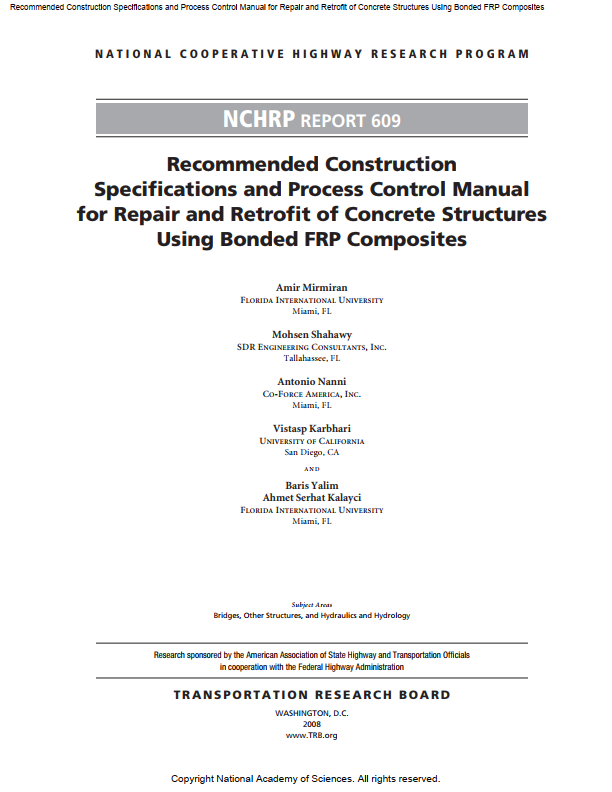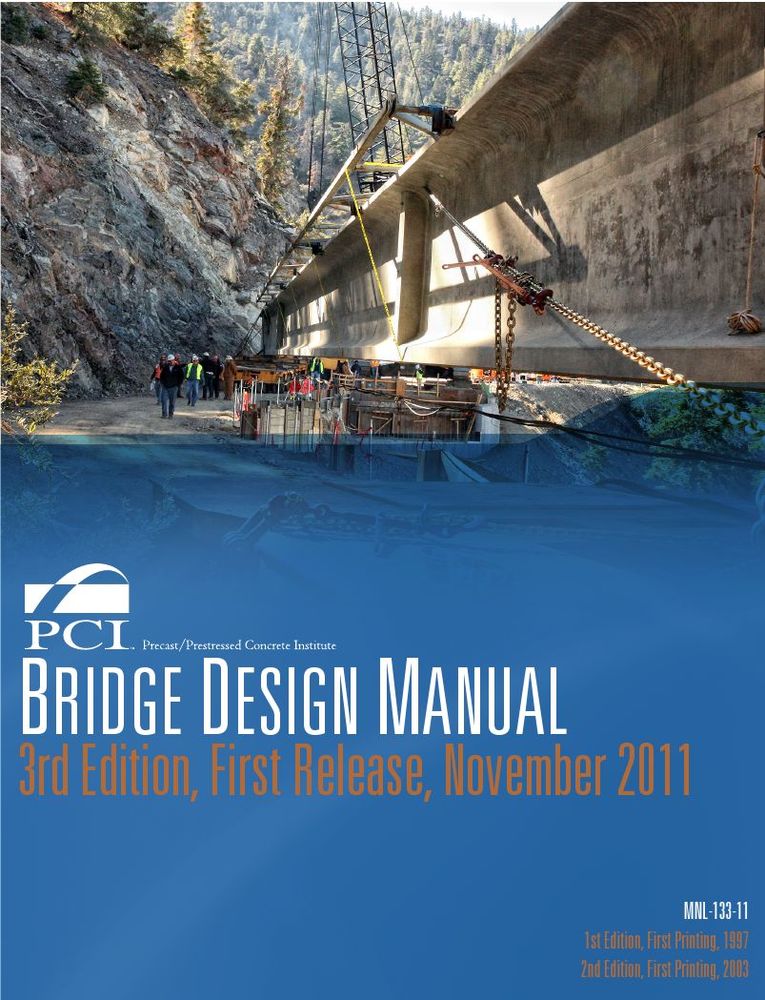NATIONAL COOPERATIVE HIGHWAY RESEARCH PROGRAM (NCHRP) REPORT 609: RECOMMENDED CONSTRUCTION SPECIFICATIONS AND PROCESS CONTROL MANUAL FOR REPAIR AND RETROFIT OF CONCRETE STRUCTURES USING BONDED FRP COMPOSITES
This report, co-authored by the founder of SDR, Dr. Mohsen Shahawy in 1992, was innovative work that would go on to standardize the use of Fiber Reinforced Polymer (FRP) by highway agencies for the repair and retrofit of concrete structures. The work introduced FRP as an economically viable alternative to traditional repair that is light weight, durable, easy to install, and has a high strength-to-weight- and stiffness-to-weight ratio. The report acknowledged the lack of universally accepted construction specifications and procedures regarding the application of FRP repair systems. The NCHRP report, through extensive research of 109 specimens, addressed the shortcomings of the time and proves to be a valuable resource, still applicable to this day. It addresses issues related to the construction of FRP repair systems, including FRP defects, irregularities of the concrete surface, groove size tolerance for Near-Surface Mounted (NSM) reinforcement, and environmental conditions during installation. The report also includes the following supplementary attachments: Recommended Process Control Manual that incorporates steps on implementing Quality Insurance Policy and Program Overview, QA Guidelines for Construction Activities, and methodology for Implementing and Monitoring the QA Program. The findings, and the Process Control Manual introduced in this report, generated enormous strides in the standardization of FRP for repair and retrofit and became a valuable resource for engineers.











